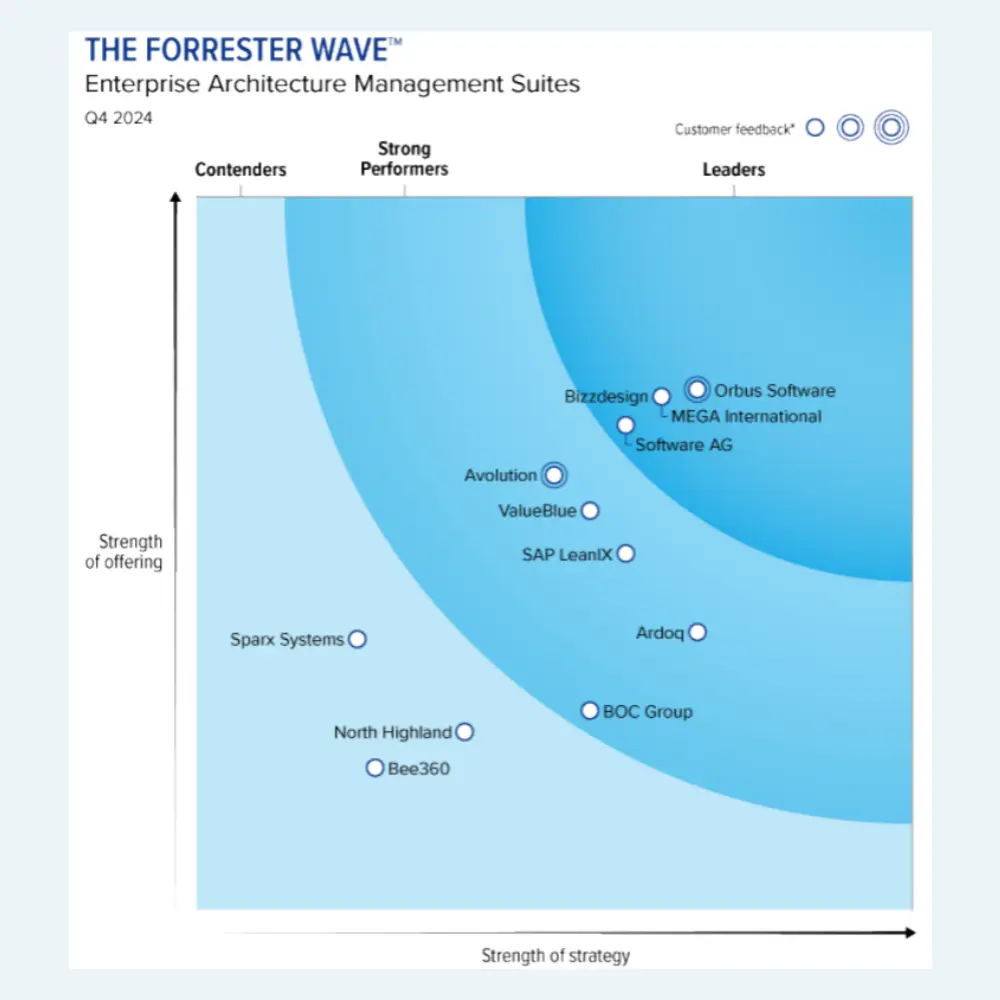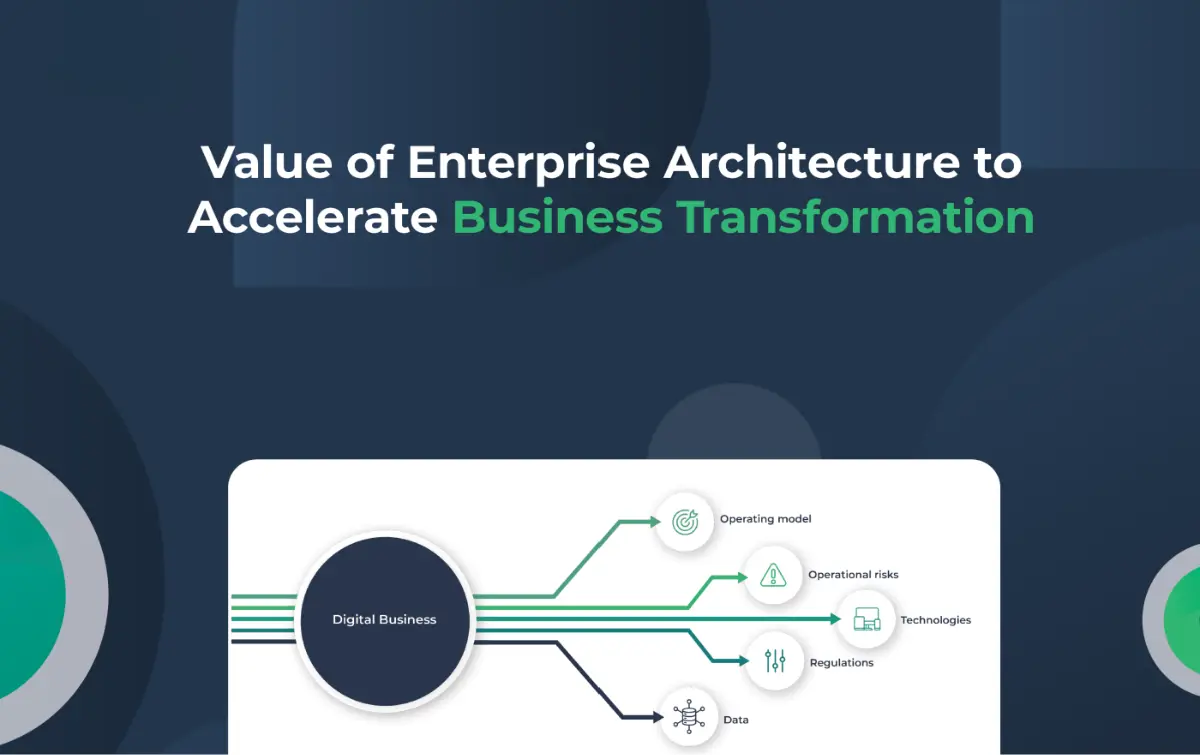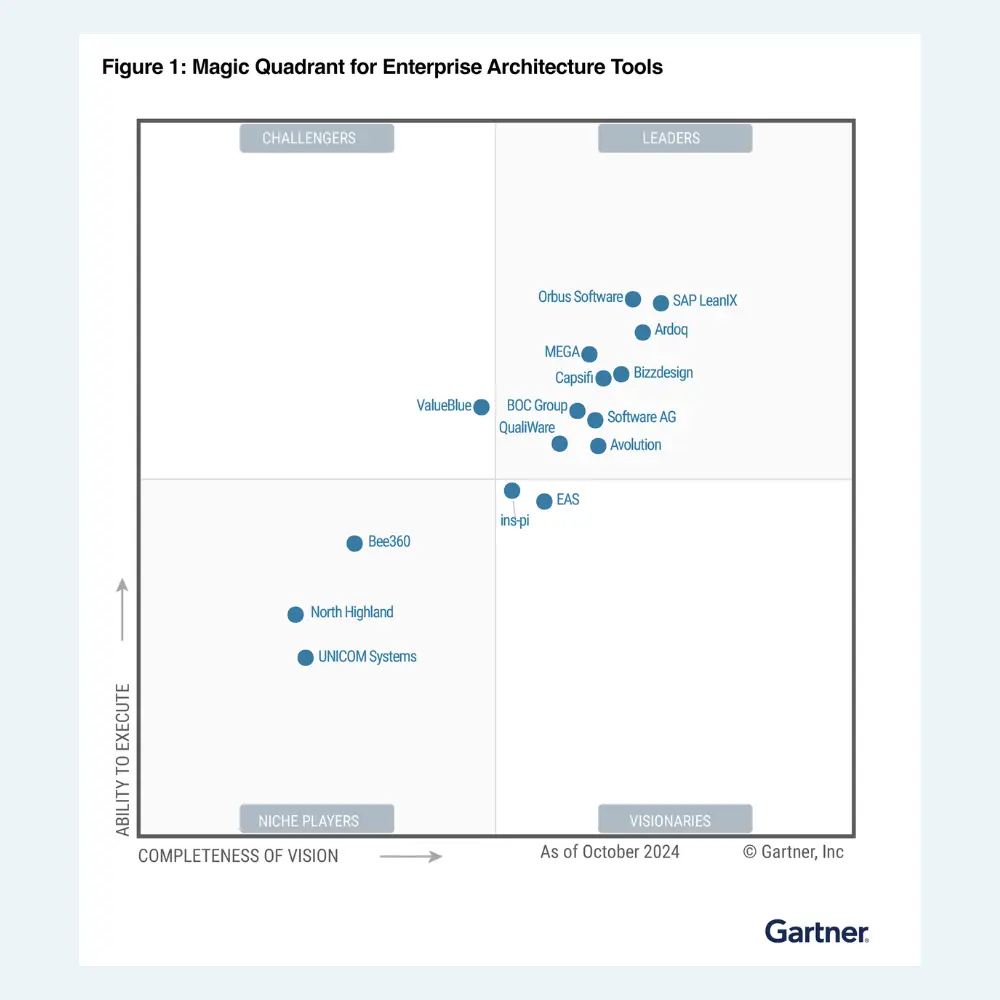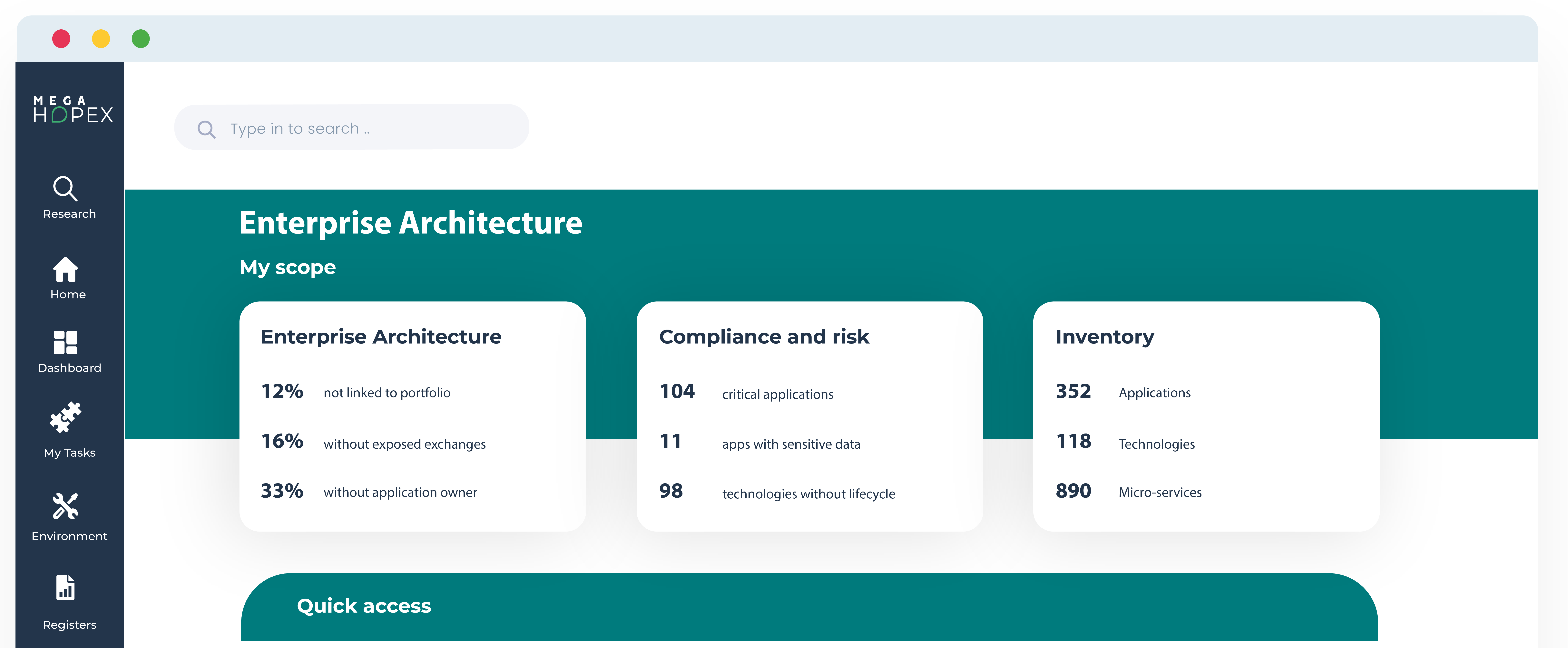
Key Benefits of Enterprise Architecture
Enterprise architecture (EA) is the blueprint of a business's entire IT infrastructure that helps integrate organizational processes with technology applications. It enables organizations to analyze, design, plan, and implement strategies to improve their business operations.
Effective EA is crucial in streamlining operations and achieving business goals in today's complex business environment, where multiple technologies and systems are interconnected.
Implementing EA in an organization provides many benefits, including efficient resource allocation, improved decision-making, better risk management, reduced maintenance costs, increased agility, and better IT alignment with business objectives.
This article delves into the various benefits of EA and how they help organizations stay ahead of the competition.
10 Benefits of Enterprise Architecture
Enterprise architecture can bring numerous benefits to organizations that implement it effectively. Some of the key benefits include:
1. Provide a shared vision of the organization
Enterprise Architecture provides a shared vision of the organization by aligning business goals, objectives, strategies, and processes with its IT infrastructure. EA achieves this through its frameworks, models, and standards, which provide a common understanding of the enterprise's architecture landscape. EA uncovers interdependencies between various business components such as people, processes, technology, and data by creating a holistic view of an organization.
This approach enables stakeholders to see how different parts of the company fit together and how changes in one area might impact the others. Moreover, EA acts as a bridge between various departments, including the IT and business units, breaking down silos and promoting collaboration. This fosters a unified vision that ensures everyone works towards the same goal, eliminating conflicts and enhancing communication. In summary, EA is critical for developing a shared vision and aligning stakeholders around a common strategic direction.
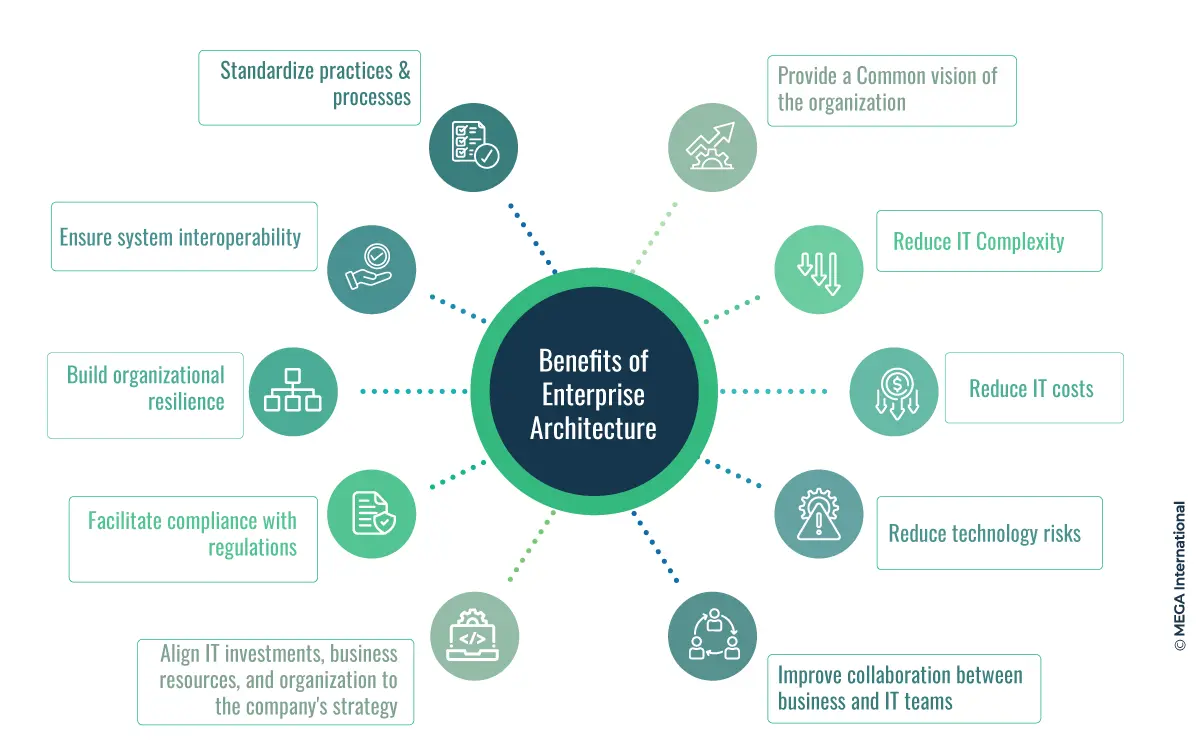
2. Reduce IT complexity
Enterprise architecture is pivotal in reducing IT complexity and enabling the seamless evolution of information systems. It provides a comprehensive blueprint outlining the organization's IT infrastructure components, relationships, and how technology resources can align with business objectives. EA clarifies the organization's IT systems and ensures they align with strategic goals.
The standardization of IT allows for smoother communication between departments and enhances the decision-making process. EA's comprehensive strategies ensure that technology platforms are built on a modular structure, making adding and removing components as needed easier.
Furthermore, EA's governance framework provides a clear direction for security protocols, data management processes, and compliance with industry standards. In summary, enterprise architecture helps to reduce IT complexity by providing a framework for standardization, modularity, and governance.
3. Reduce IT costs
EA achieves this goal by standardizing the IT infrastructure, eliminating redundant applications, and optimizing technology investments. By creating a comprehensive view of the organization's current and future needs, EA helps identify IT inefficiencies, reduces service duplication, and redirects resources to improve areas that need them most by cutting unnecessary IT expenses and increasing productivity. EA can also help identify opportunities for innovation in IT systems and processes.
By breaking down organizational silos and encouraging collaboration, EA promotes the development of innovative IT solutions that can reduce IT costs while improving the quality of IT services. EA can help organizations achieve long-term cost savings while improving performance and increasing competitiveness.
4. Reduce technology risk
Enterprise architecture aims to help organizations reduce technology risk by providing a framework for managing IT systems and processes. Here are some ways in which EA can achieve this:
- Risk identification: EA provides a holistic view of IT systems and processes, making identifying potential risks and vulnerabilities easier. By identifying these risks early on, organizations can take steps to mitigate them and avoid costly downtime or security breaches.
- Risk management: EA provides a structured approach to managing technology risk. It enables organizations to prioritize risks based on their potential impact and likelihood of occurrence and develop mitigation strategies.
- Compliance: EA can help organizations ensure compliance with regulatory requirements and industry standards. By providing a framework for managing IT systems and processes, EA can help organizations demonstrate compliance with regulations and standards, reducing the risk of fines or legal action.
- Continuity: EA can help organizations ensure business continuity during a technology-related disruption. EA can help organizations develop effective disaster recovery and business continuity plans by providing a structured approach to managing IT systems and processes.
- Alignment: EA can help ensure that IT systems and processes are aligned with the organization's strategic objectives. By providing a shared vision of the organization's IT landscape, EA can help ensure that technology investments are aligned with business goals, reducing the risk of misalignment and wasted resources.
Enterprise architecture provides a framework for managing IT systems and processes. It helps organizations identify and mitigate potential risks, ensure compliance with regulations and standards, ensure business continuity, and align technology investments with strategic objectives. This approach can help organizations reduce the risk of downtime, security breaches, and other technology-related disruptions, enabling them to operate more efficiently and effectively.
5. Improve collaboration between business and IT teams
EA tool is a strategic approach that enables improved collaboration between business and IT teams. It aligns business requirements and goals with IT strategies and technology to create a holistic view of the organization's functions and operations. EA achieves this by developing frameworks and models agreed upon by the business and IT teams, ensuring enterprise IT solutions meet the organization's needs. EA also provides a common language for all stakeholders, improving communication and understanding of complex IT projects.
6. Align IT investments, business resources, and organization to the company's strategy
Enterprise architecture (EA) helps organizations align their IT investments, business resources, and organizational capabilities to their overall strategy. EA is a holistic approach that considers various aspects, such as technology, people, processes, and information, to create a roadmap for achieving strategic goals. It achieves this by structuring the analysis of the current state of the organization's resources and capabilities, identifying gaps and opportunities, and developing a future state that aligns with the strategic objectives.
EA also ensures that business and IT decisions are coordinated and structured with a shared understanding of the overall strategy. By providing a common language and framework, EA enables organizational stakeholders to communicate effectively, make informed decisions, and ensure that investments and resources align with the strategic objectives.
7. Facilitate compliance with regulations
Enterprise architecture (EA) can help organizations comply with regulations by providing a structured framework for managing technology and systems. EA combines technical and business information and captures data about the organization's hardware, software, and people. This enables organizations to understand how their technology supports their goals and objectives and how it is linked to legal and regulatory requirements. EA can also assist with identifying risks and gaps in compliance and facilitate the development and implementation of solutions to address these.
Overall, EA supports improved compliance with regulations by providing a clear and comprehensive view of an organization's technology landscape, enabling strong governance, and promoting agility in responding to changing compliance requirements.
8. Build organizational resilience
EA helps organizations build resilience by providing a holistic view of their operations, including business processes, applications, data, and technology infrastructure. This enables businesses to identify potential risks and vulnerabilities and develop mitigation strategies. Here are some of the benefits of how EA can help build organizational resilience:
- Risk management: EA provides a structured approach to risk management by identifying potential risks and assessing their impact on business operations. This helps businesses develop strategies to mitigate risks and build resilience against unforeseen events.
- Business continuity: EA helps businesses develop a comprehensive plan by identifying critical business processes and dependencies and developing strategies to ensure uninterrupted operation during a disruption.
- IT resilience: EA helps businesses build IT strength by identifying critical technology systems and infrastructure and developing strategies to ensure availability and recoverability during a disaster or system failure.
- Flexibility: EA enables businesses to be more flexible and responsive to changing business needs by providing a flexible architecture that can adapt to changing business requirements and evolving technology trends.
- Efficiency: By eliminating redundancies and optimizing technology infrastructure, EA helps businesses improve operational efficiency, reduce costs, and improve the overall effectiveness of their operations.
- Compliance: EA helps businesses comply with regulatory requirements by providing a structured approach to compliance management and ensuring that all systems and processes are aligned with regulatory requirements.
By providing a comprehensive view of operations, identifying potential risks, and developing strategies to mitigate them, EA helps businesses build resilience, increase efficiency, and adapt to changing business needs.
9. Ensure system interoperability
Enterprise architecture (EA) is a critical aspect of any organization's IT strategy, and one of its key benefits is ensuring system interoperability. Interoperability refers to the ability of different systems and applications to work together seamlessly, exchanging data and sharing resources without issues.
EA empowers organizations to set standards, protocols, and frameworks, guaranteeing that all systems and applications are designed and developed with interoperability. This approach sidesteps challenges such as data incompatibility, application conflicts, and other issues when different systems and applications must communicate effectively.
By promoting interoperability, EA streamlines IT systems, eliminates duplication of effort, and optimizes resource usage. This increases efficiency, decreases costs, and improves collaboration between teams and departments.
Furthermore, EA ensures that new technologies and applications can be integrated into the organization's IT infrastructure, allowing organizations to keep pace with the rapidly changing technological landscape and seize emerging opportunities.
10. Standardize practices and processes
One key benefit of EA is its ability to standardize practices and processes. Here are some ways in which standardizing practices and procedures through EA can benefit organizations.
Firstly, it guarantees that business operations are consistent and streamlined across departments, resulting in fewer errors and less operational inefficiency. Secondly, standardization empowers organizations to react quickly and effectively to changes, fostering adaptability and agility. Thirdly, it enhances collaboration, allowing teams to work seamlessly towards common objectives.
Fourthly, it simplifies the integration of new technology into business processes, reducing the risk of failure and enhancing overall efficiency. Lastly, it reinforces best practices, enabling organizations to optimize operations and ensure compliance with industry standards and regulations.
These advantages result in improved customer satisfaction, increased productivity, and long-term organizational success.
How does enterprise architecture add value to an organization?
Companies must recognize the significance of Enterprise Architecture in achieving their business objectives. Businesses often focus solely on constructing their information systems without considering the organization, resulting in a lack of understanding of the interdependencies between business and IT.
Systems built in this manner are difficult to maintain and often need more scalability. However, with the complexity of modern organizations and the constant evolution of business, utilizing an enterprise architecture practice becomes essential to adapting to change successfully.
To illustrate this point, consider the analogy of renovating a house.
If you renovate a house without changing its foundations, you can do so without an architect. However, if your goal is to revise the house's structure, which will require considering electrical plans, the water supply, and the load-bearing walls, your project's success will need an architect.
Summary
The benefits of implementing enterprise architecture are numerous and can significantly impact an organization's success. By clearly understanding an organization's processes, systems, and technologies, enterprise architecture enables better decision-making, improved efficiency, enhanced collaboration, increased agility, reduced costs, and improved security.
FAQs
Enterprise architecture systems bring significant benefits to organizations that implement them. One of the essential benefits is improved alignment between business and IT strategies. By providing a structured approach for defining and managing business processes, information, applications, and infrastructure, enterprise architecture systems enable organizations to ensure that their IT investments are focused on meeting business objectives.
- Provide a shared vision of the organization
- Reduce IT complexity and facilitate the evolution of Information Systems
- Reduce IT costs by removing redundancies and breaking the organizational silos
- Reduce technology risk
- Improve collaboration between business and IT teams
- Align IT investments, business resources, and organization to the company's strategy
- Facilitate compliance with regulations
- Build organizational resilience
- Ensure system interoperability
- Standardize practices and processes
1. Simplifying Complex Business Systems with Enterprise Architecture
2. Cost Savings and Efficiency Gains with Enterprise Architecture Implementation
3. Creating a Consistent Method for Business Process Improvement with Enterprise Architecture
4. Aligning Business Strategy and IT Infrastructure with Enterprise Architecture
5. Enabling Agile and Scalable Digital Transformation with Enterprise Architecture
6. Mitigating Risk and Increasing Security with Enterprise Architecture Frameworks
7. Facilitating Collaboration and Innovation with Enterprise Architecture
8. Enhancing Customer Experience through Enterprise Architecture Foundations
9. Leveraging Data Analytics and Big Data with Enterprise Architecture Principles
10. Future-Proofing and Adapting to Change with Enterprise Architecture Planning
The Open Group Architecture Framework (TOGAF) is a popular methodology used for EA implementation. The benefits of adopting TOGAF include the following:
- Better communication and collaboration between departments and business units
- Improved understanding of business processes
- Enhanced agility and flexibility in responding to rapidly changing market conditions
Maximize the ROI of Your Enterprise Architecture Initiative
Enterprise Architecture Related Content
Shift from a documentation tool to an operational tool and accelerate business transformation
MEGA HOPEX for Enterprise Architecture
Request a demonstration of HOPEX for EA, and see how you can have immediate value of your projects.








